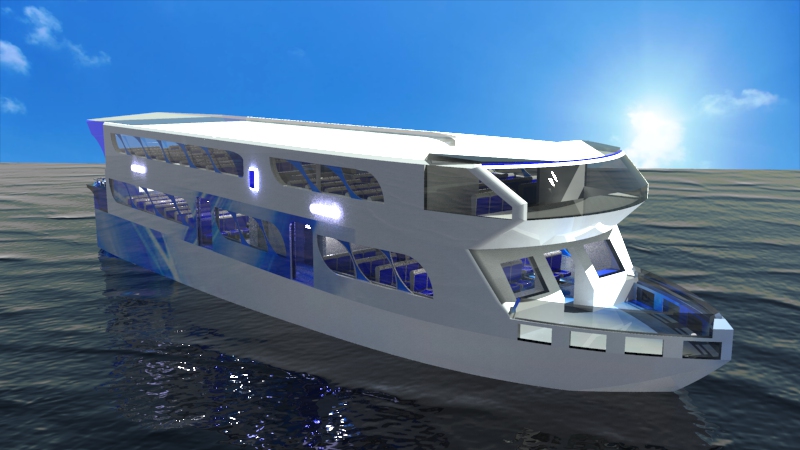Student design teams from Singapore and Indonesia took top honors in the annual design competition at the Ferry Safety and Technology Conference in New York City March 22.
This year’s challenge, supported by the Maritime and Port Authority of Singapore, was to design a passenger ferry that could traverse the Singapore Strait between terminals in Indonesia, Malaysia and Singapore, carrying 300 passengers plus crew. Students had to design to account for local weather patterns and traffic conditions in the Malacca and Singapore straits.
“The design competition lets the next generation of mariners know about the needs and opportunities for safe ferry design and operations,” said Dr. Roberta Weisbrod, Executive Director of the Worldwide Ferry Safety Association, which sponsors the conference.
Weisbrod said the competition with its exacting specifications and requirements for technical detail was difficult – more than half the contest registrants did not submit designs.
“We were forced to choose among many good entries,” she said. “The award-winning teams were technically proficient and created innovative designs.”
First place was awarded to Solarjet, a design collaboration of students and advisors from three academic institutions in Singapore: Marcus Teo Tze Kang and Ong Young Kit of Nanyang Technological University, Jaylen Li of Singapore Management University and professors Ivan Tam and Arun Dev of Newcastle University.
The Solarjet features a tri-mono hull – a monohull below the waterline, but trimaran at the waterline for stability without a need for ballast. The design calls for aluminum-steel alloy to minimize construction cost while providing a strong and lightweight frame.

The Archimaiden, a dual-fuel diesel and LNG powered aluminum catamaran, took second place in the Worldwide Ferry Safety Association student design competition. Image courtesy WFSA.
Propulsion is by waterjet and azipods, with bow and stern thrusters. Main power is diesel, supplemented by electrical power generated by a large, movable solar array at the top of the vessel that can be raised to double as a screen for projected visual images when it is not generating power.
Second place went to the Archimaiden, a design from the Institut Teknologi Sepuluh Nopember Surabaya, Indonesia, led by Raja Andhika Rizki Ramadhani. Teammates included Rahmat Diko Edfi, Novario Pratama Adiguna, Muchamat Alvinur, Jangka Rulianto, Riyan Bagus Prihandanu, and Alif Yudha Ashari; and faculty advisors Hasanudin, Agoes Santoso, and Muhammad Zaman.
The team drew up an aluminum catamaran with diesel-liquefied natural gas (LNG) power, to take advantage of LNG fueling stations now available in Singapore. The design has another notable feature: a system to monitor for floating harbor debris and keep it from clogging the vessel intakes.
Two third-place prizes went to the BC Grandeur, an aluminum catamaran with a center bow/hull to reduce pitch movement, from a team at the Indian Institute of Technology; and the Safe Ferry in Singapore Strait, an aluminum catamaran from a team at the Delft University of Technology, Netherlands, featuring a navigational system able to detect floating objects up to 200 meters away, and a skirt-like structure made of high-density polyethylene to protect against floating debris.




